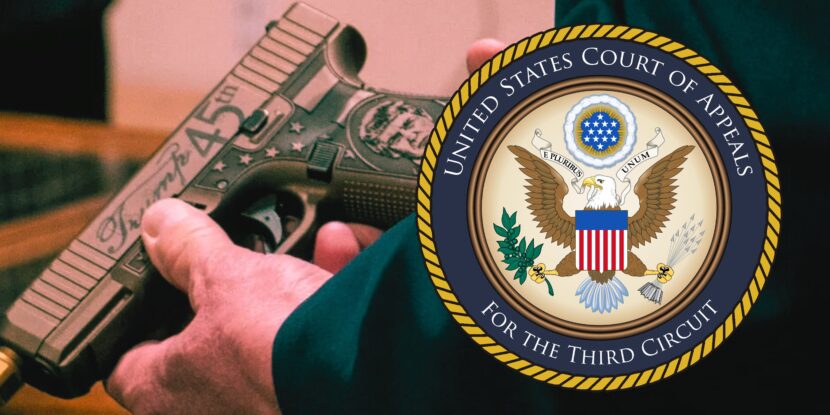President Trump recently announced the nomination of attorney Emil Bove to fill one of two vacancies on the United States Court of Appeals for the Third Circuit. Let’s hope that Mr. Bove’s views on the Second Amendment were thoroughly vetted, because the vacancies on the Third Circuit provide a rare opportunity for President Trump to protect the Second Amendment’s right to keep and bear arms.
The Third Circuit covers the states of Pennsylvania, New Jersey, and Delaware. For many cases that do not go to the United States Supreme Court, it is the last word on some hotly debated constitutional issues arising in those states.
The court is currently evenly split with six Republican- and six Democrat-appointed active judges. President Trump now has the chance, with his two judicial appointments, to put the court firmly in Republican control. And that will make it unique among the federal circuit courts of appeal—a Republican-controlled court overseeing the rabidly anti-gun state of New Jersey and the mostly anti-gun state of Biden’s Delaware.
PROSPECT OF A LIFETIME.
This is the prospect of a lifetime for the Second Amendment movement. It goes beyond the mere potential to invalidate New Jersey’s bans on so-called “assault weapons” and “large-capacity” magazines and its “sensitive places” (gun-free zones) laws, which are all issues currently pending before the Third Circuit. While those outcomes would be significant in their own right, their importance is enhanced by the “circuit splits” they would create with other courts of appeals.
The United States Supreme Court, for the most part, gets to pick and choose which cases it takes. One of the criteria it considers when deciding whether to take a case is whether the lower courts disagree about a legal issue the case presents—i.e., whether there is a circuit split. One of the reasons it has been so hard to get the Supreme Court to review Second Amendment cases is that it has been difficult to generate circuit splits.
The majority of the anti-gun states – states like California, Massachusetts, New York, Illinois, Hawaii, and Maryland – are in circuits with courts controlled by anti-gun judges, which means that when those anti-gun states’ laws are challenged, they tend to be uniformly upheld by the federal circuit courts where they are located. To compound the headaches for the Second Amendment movement, the anti-gun courts in those blue state jurisdictions cite to the anti-gun courts in the other blue state jurisdictions who in turn cite to the anti-gun courts in other blue state jurisdictions and so on… thereby creating an unvirtuous circle of anti-constitutionalism concerning the right to bear arms; and along with that no “circuit split” for the Supreme Court to resolve.
SNOPE V. BROWN.
We have seen this play out with the recent denial of Supreme Court review in Snope v. Brown, an ”assault weapons” case from Maryland.
Four votes are needed to grant review, and three Justices indicated they would have granted review (Thomas, Alito, and Gorsuch), while a fourth justice (Justice Kavanaugh) wrote a concurrence in the denial, indicating that the Court should consider this issue in the future but not yet. Had there been a circuit split, it would have been more difficult for Justice Kavanaugh and the other justices to justify putting off review in what should be a straightforward win for the Second Amendment.
But there is a light on the horizon. If the Third Circuit were transformed into a reliably pro-Second-Amendment court, the likelihood of generating circuit splits on Second Amendment issues would increase dramatically. This, in turn, would increase the opportunities for the Supreme Court to hear Second Amendment cases on the grounds of existing circuit splits.
The Third Circuit has shown signs that there are some strong judges who respect the right to bear arms already on the bench, as evidenced by its lopsided en banc ruling in favor of the Second Amendment in the Bryan Range v. Garland case. Mr. Range had been disarmed for a decades-old non-violent, welfare fraud offense due to the effect of a federal law, which disarms anyone convicted of a “felony” for life. The Third Circuit en banc ruled 13-2 that this gun control law violated the Second Amendment as applied to Mr. Range.
It is imperative that President Trump appoint judges to the Third Circuit who are rock-solid on the Second Amendment. Of course, one nomination has already been made, and given the administration’s support of Second Amendment issues, we hope proper vetting was done, but there is still one nomination to go.


